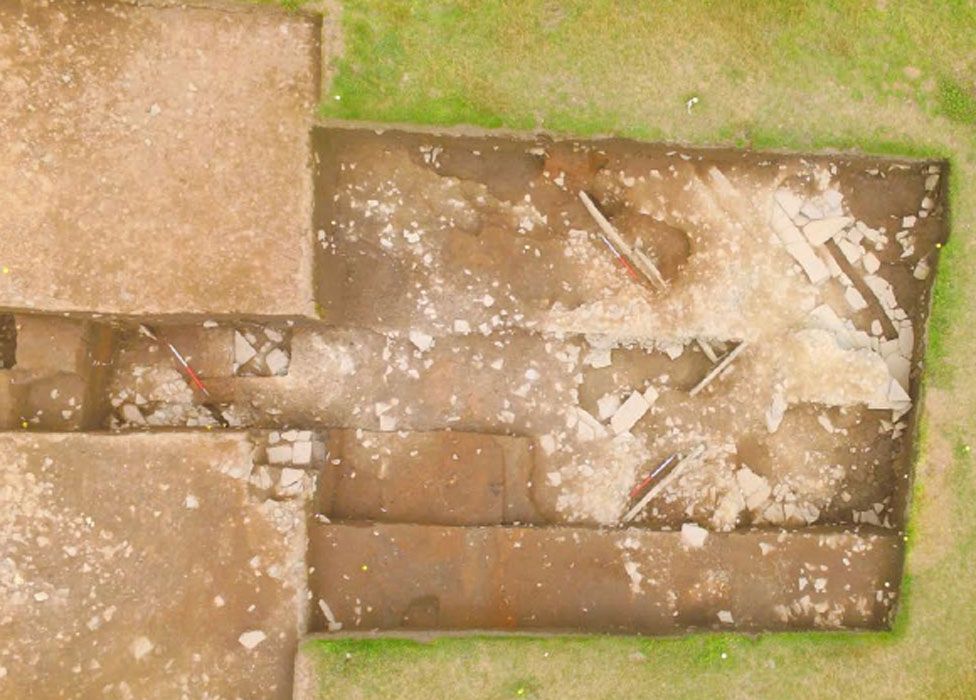Mystery stone structure under Neolithic dump on Orkney
- Published

Archaeologists have uncovered a mysterious stone structure buried under what they describe as Scotland's "largest Neolithic rubbish dump".
The layout of the stone slabs, known as orthostats, found during a dig at Ness of Brodgar on Orkney is unlike anything previously found on the islands.
Archaeologists are also mystified as to why the structure was covered over by a huge midden.
They have speculated that it could possibly be a chambered tomb.
However, the dig team, which is led by University of the Highlands and Islands Archaeology Institute, said further "hard work" would be needed to properly understand the find.
Since 2002, Neolithic buildings, artwork, pottery, animal bones and stone tools have been discovered at Ness of Brodgar, the location of the Ring of Brodgar standing stones.
The mystery structure was found on the last day of this year's excavations of a complex of Neolithic buildings in the area.
Almost 10m (33ft) wide and comprising slabs of up to 4m (13ft) in length, the structure could be the oldest of the buildings under covered so far. It could be 5,000 years old.
Site director Nick Card said: "The sheer size and scale of the stones unearthed are unprecedented on this site.
"The way the stones are built into the construction is also unique to the Ness. This all suggests that they may have been re-used and taken from elsewhere.
"Perhaps they may be part of a stone circle that pre-dates the main Ness site. It is all a bit of mystery and we won't know more until we do more work."
Last month, a human arm bone was uncovered during the dig.
Archaeologists believe the bone was deliberately placed and could possibly be the remains of a respected original founder of the large complex.
- Published21 July 2016